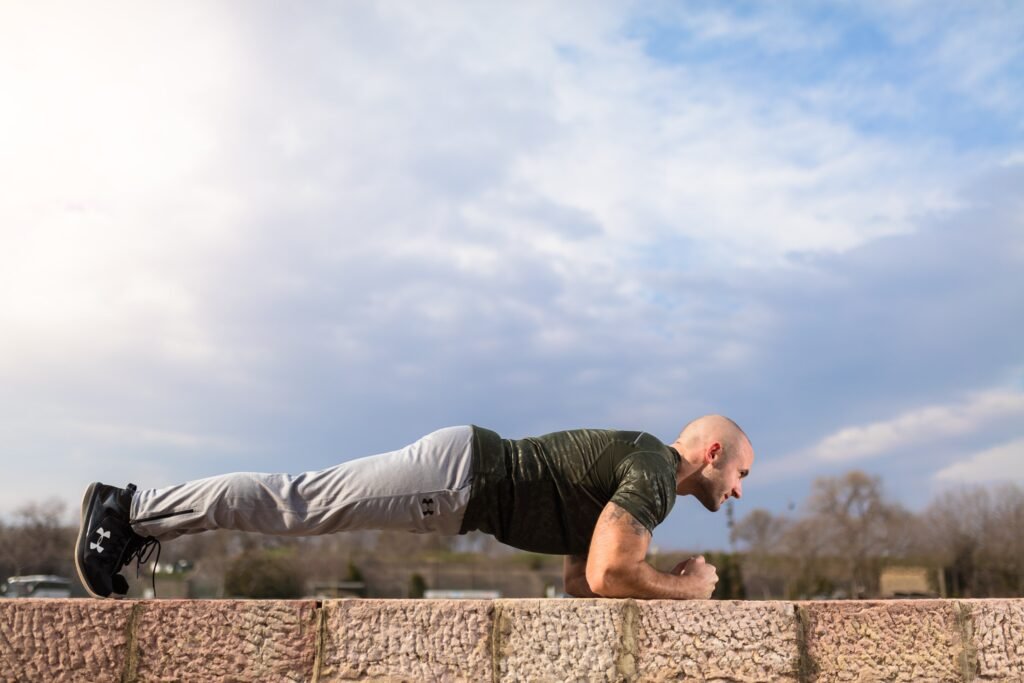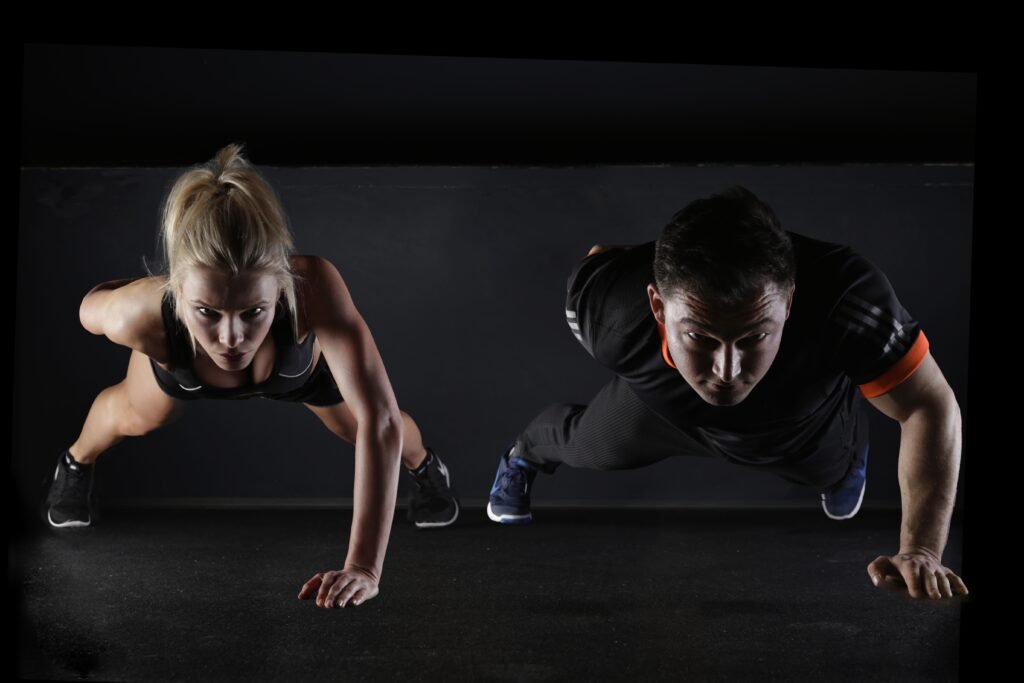The plank exercise is a powerful addition to any fitness routine, strengthening the core and improving overall body stability and mental focus. This simple yet effective exercise is adaptable to all fitness levels and provides a multitude of benefits beyond core strength. In this guide, we’ll explore the benefits of planking, tips for perfecting your form, variations to target different muscle groups, and important safety considerations.
Why Planking is a Must-Have in Your Routine
Planking provides benefits for a well-rounded fitness plan, helping with balance, posture, and even metabolism. Here are some science-backed advantages:
Builds Core Strength and Stability
Planking engages key core muscles like the transverse abdominis and obliques, which are essential for spine support and good posture. A strong core is crucial for sports performance and daily activities, reducing the risk of injuries. Harvard Health Publishing highlights that core exercises like planks boost lower back strength and help protect your spine.
Offers a Full-Body Workout
Though the plank targets the core, it also activates the shoulders, arms, back, glutes, and legs, offering a total-body workout. According to the Mayo Clinic, planks can enhance muscle coordination and functional strength, making it a valuable addition for holistic physical improvement.
Improves Balance and Coordination
Planking helps with body stabilization, which enhances balance and coordination. Research in Sports Health shows that core strength exercises like planks improve stability, helping with sports and daily tasks, especially as we age.
Boosts Metabolism and Aids Weight Management
Planking can increase your heart rate and engage multiple muscles, aiding calorie burn and enhancing metabolism. The Journal of Sports Science and Medicine notes that core-focused exercises support calorie burning and energy expenditure, contributing to weight management.
Promotes Flexibility
By engaging the shoulders, hamstrings, and arches, planking can improve flexibility, which is vital for injury prevention and athletic performance. A Journal of Athletic Training study supports flexibility as key in reducing sports injuries and enhancing athletic performance.
Enhances Mental Focus
Planking demands concentration, helping improve mental discipline and focus. This engagement enhances cognitive function and relieves stress, as noted by Psychology Today in articles on mindfulness and exercise.
How to Perform the Plank Correctly
Proper technique is essential to maximize benefits and avoid strain. Here’s a breakdown of the plank fundamentals:
Standard Plank
- Position: Start in a push-up stance, with forearms on the ground and elbows directly under shoulders.
- Engage Core: Keep your body aligned, avoiding sagging hips or an arched back.
- Duration: Aim for 20–30 seconds, gradually increasing time as your strength improves.
Side Plank
- Position: Lie on your side and support yourself with one forearm, elbow under shoulder, lifting hips for a straight line.
- Core Engagement: Keep your core and glutes tight, holding each side for balanced development.
Plank Variations to Try
Adding variety keeps your routine interesting and can target different muscles. Here are some popular plank variations:
- Forearm Plank: This variation on forearms places extra emphasis on core stability.
- Reverse Plank: Face upwards, resting on hands and heels, to engage the back muscles and glutes.
- Plank with Shoulder Taps: In a standard plank, alternate tapping each shoulder with the opposite hand for improved stability and coordination.
- Plank with Leg Lifts: Lift one leg at a time while holding the plank to engage glutes and balance.
- Dynamic Plank (Up-Down Plank): Move between forearm and push-up plank positions to target arms and core.
Cautions and Considerations
While planking is beneficial, it’s essential to take precautions to avoid injuries and get the most from your workout.
- Focus on Form
Incorrect form can lead to strain in the lower back and shoulders. Use mirrors or ask a trainer to check your alignment. - Start Slowly
Beginners should ease into planks with shorter durations, gradually progressing as core strength improves. Quality is better than quantity. - Listen to Your Body
Any sharp pain, as opposed to normal muscle burn, is a sign to stop. Seek medical advice if discomfort continues. - Adapt for Medical Conditions
If you have shoulder, back, or wrist issues, consult a healthcare professional before adding planks to your routine. Modified versions may be safer.
Conclusion
The plank is a simple yet powerful exercise with extensive benefits, from core stability to balance and mental focus. By incorporating plank variations and focusing on proper form, you can harness these benefits and build a strong foundation for overall fitness. Listen to your body, take rest when needed, and don’t hesitate to seek guidance for optimal results. Integrating planks thoughtfully into your workout routine can bring lasting improvements to your physical and mental health.
Engagement: Keep your core and glutes tight, holding each side for balanced development.



